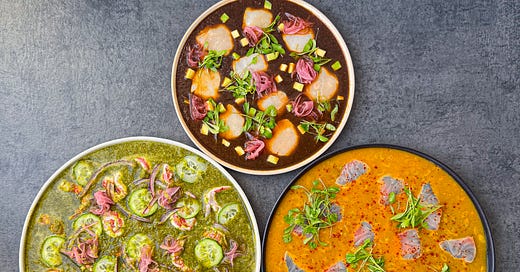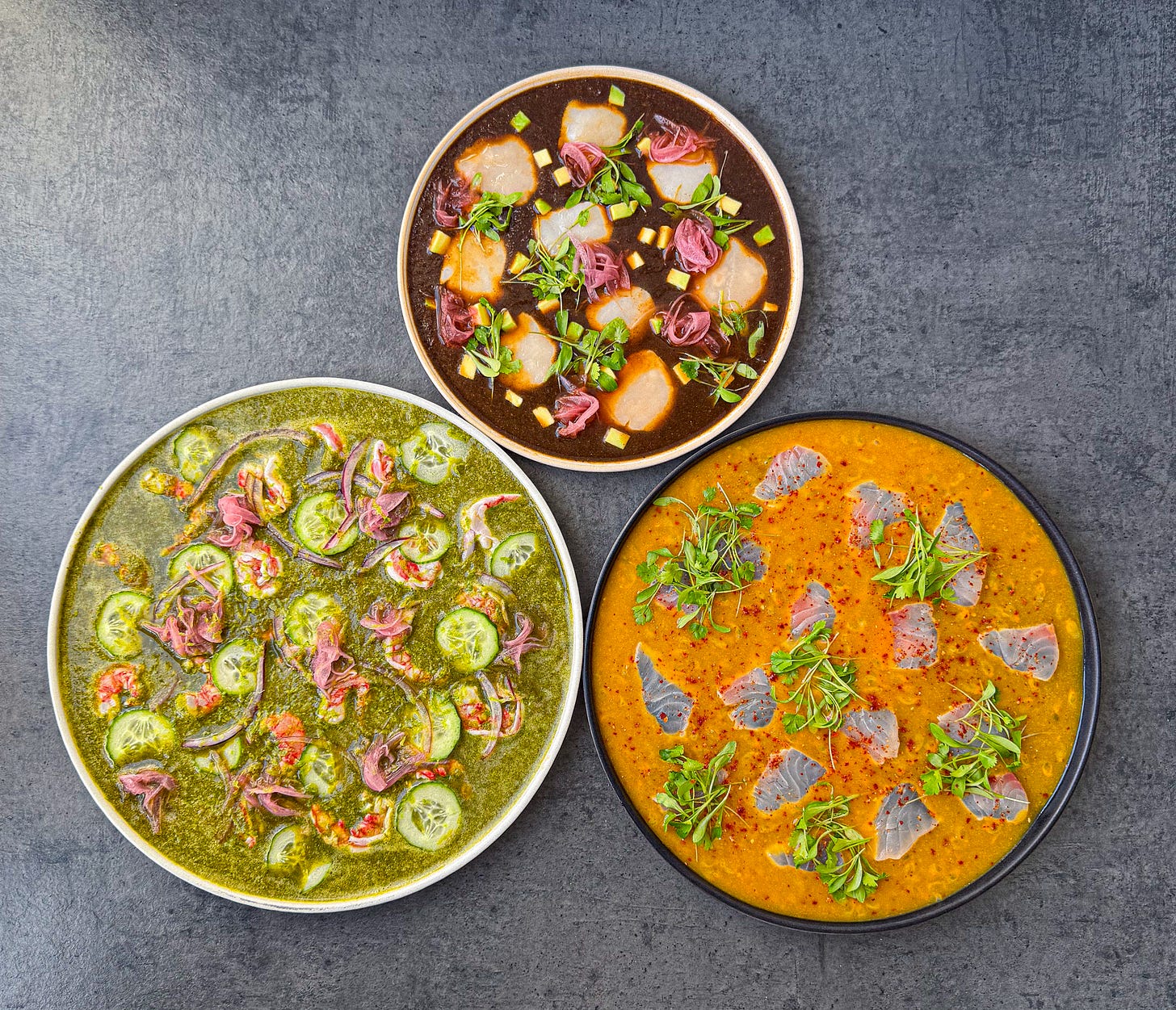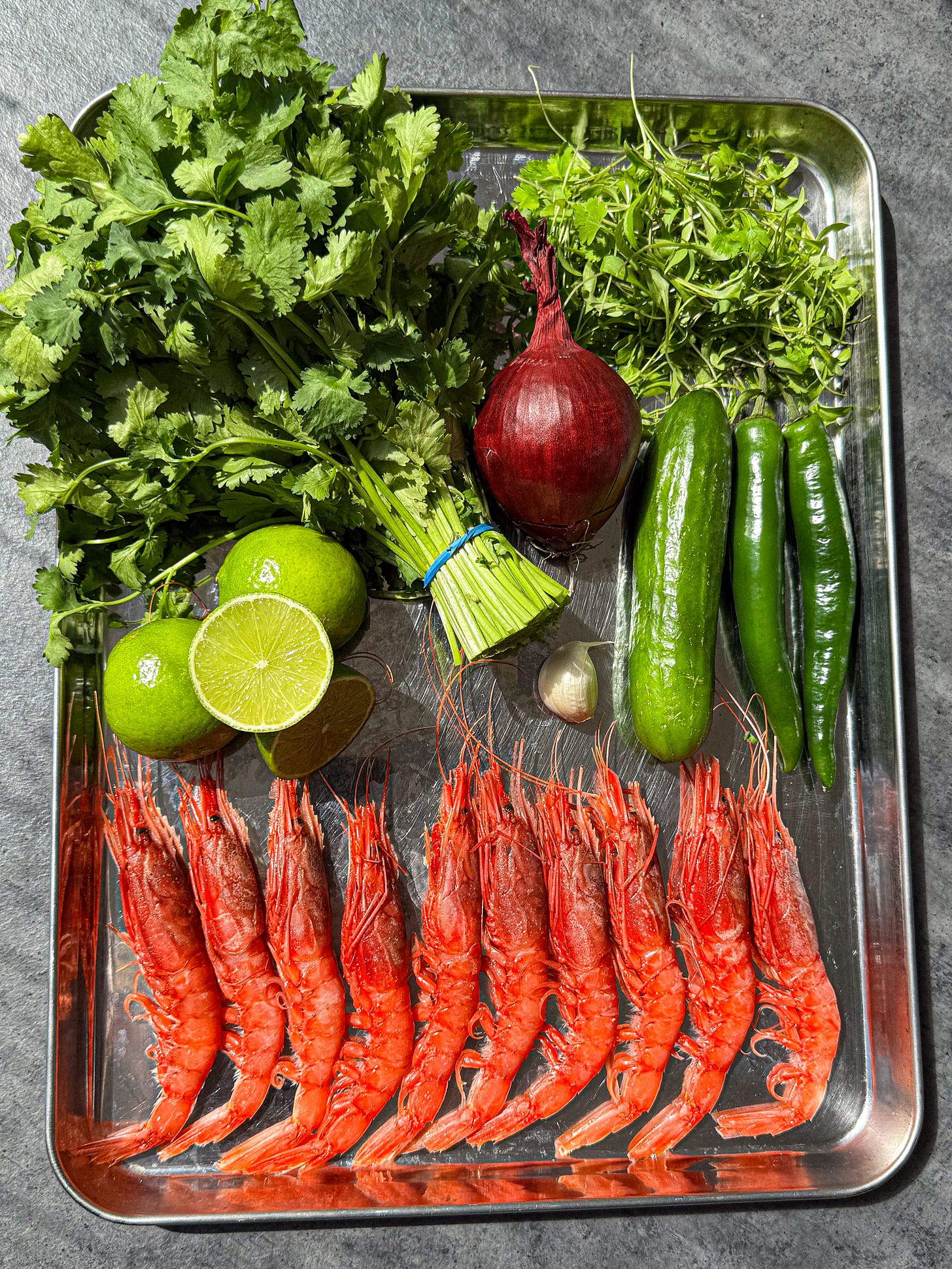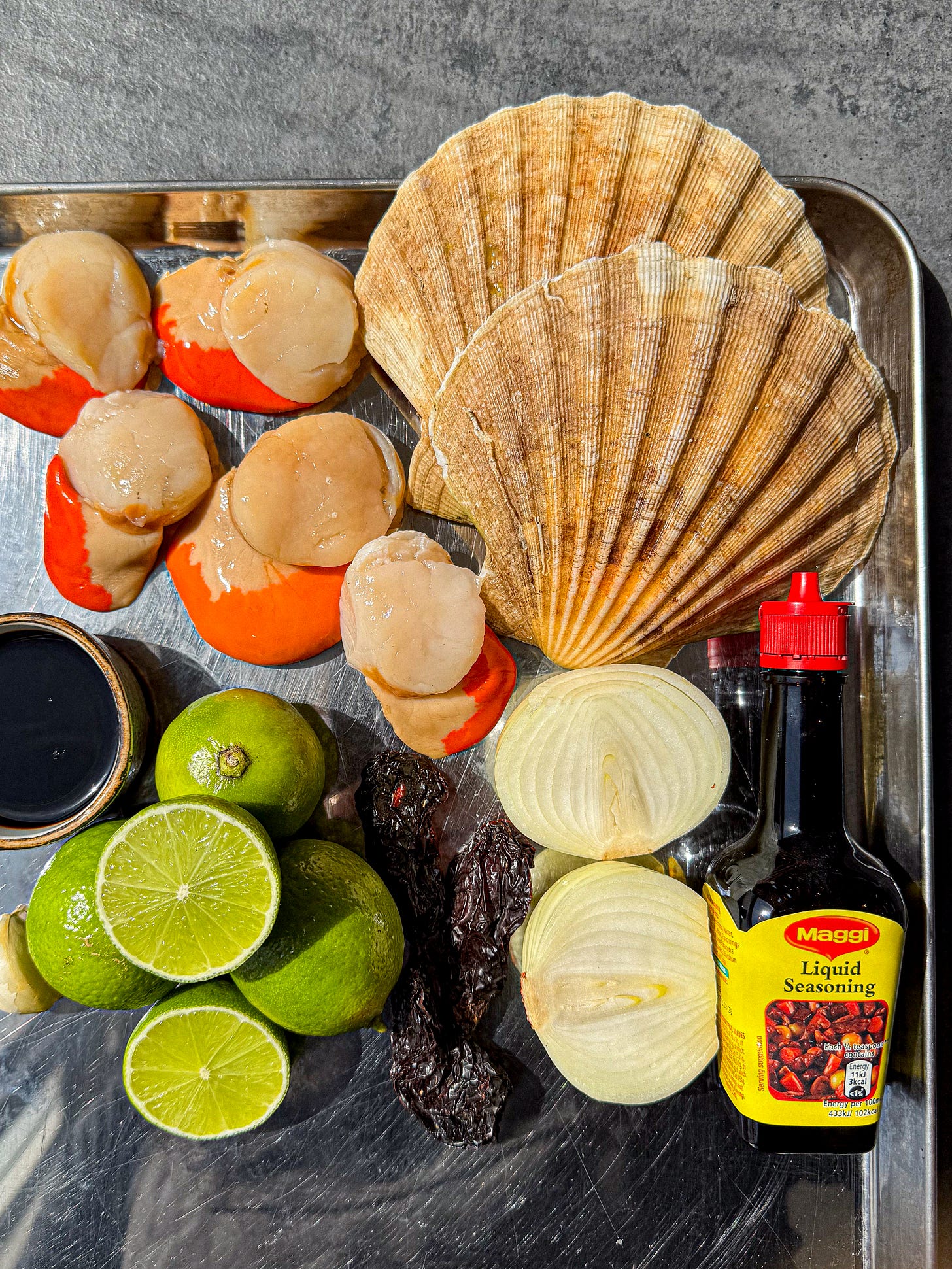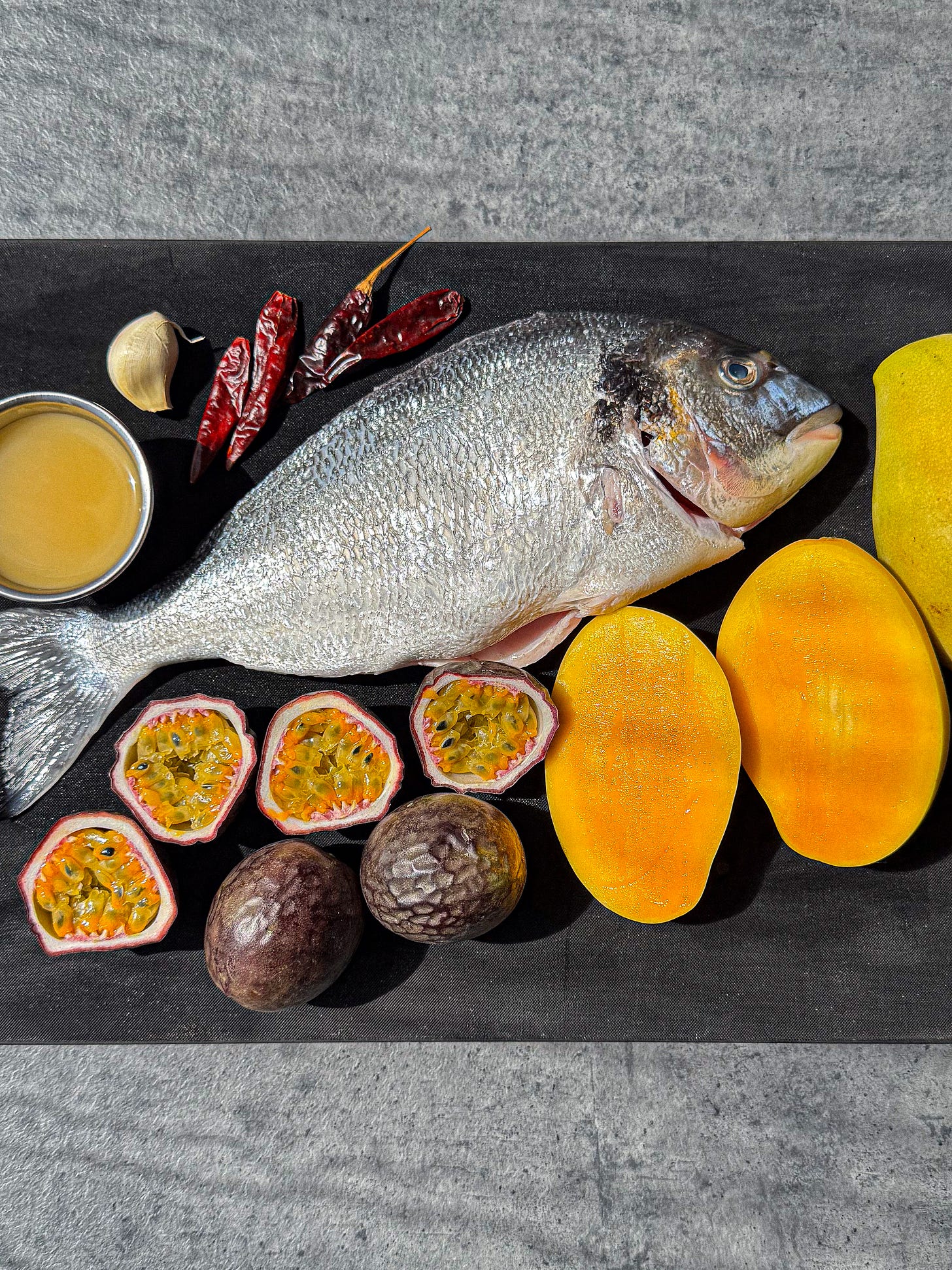When it’s hot outside and you don’t want to be sat over a stove in your kitchen, aguachile is the perfect dish to get around that. Why do I love it so much? It’s refreshing, citrusy and packed full of flavours.
Background: Coming from Sinalao, Mexico, and being directly translated as “spicy water”, aguachile was originally a dish that consisted of dried meat that was rehydrated in water, with some added chillies for a spicy kick. However, this is not the dish that many of us know aguachile to be in current times. Shortly after people started to move to the coast in Sinalao, the fishing industry grew and a lot of it’s cuisine turned it’s focus to seafood. Why wouldn't you when you have a plethora of it around you! The meat component was replaced, most commonly by prawns, and has since grown into one of Mexico’s most loved foods around (of which, there are of course many).
For me, aguachile is a textbook seafood dish. You have a complete balance of flavours. It is sweet, salty, acidic, spicy and fatty all at once. Paired with a salty, crispy tostada and washed down with a crisp lager or dry glass of white wine, this is a standout dish.
Most commonly, we classify aguachile into three kinds. Locally know in Spanish as Verde, Negro and Rojo (green, black and red), each one has it’s own unique difference, serving as a delicious base for any seafood of your choice. As with lots of food, these recipes and their flavours vary from area to area and no two ever taste the same. Subtle differences can make a big impact on final flavours, therefore in my recipes below I will be showing you how I love to make the perfect aguachile, three different ways.
Essential Ingredients Explained:
Seafood: Aguachile is most commonly made using prawns, however, it works beautifully with other seafood too. As long as it is sashimi grade you are good to go. Check with your fishmonger if you are unsure as to whether or not it is sashimi grade. This term all depends on the fishing method and how they have been stored, therefore it is best to ask if you are ever unsure.
In these recipe I use three types of seafood across the three sauces:
Gambero Rosso (Sicilian Red Prawns): These have a soft and creamy texture and are slightly sweet, therefore perfectly pair with the refreshing, bright and citrusy green sauce.
Hand-dived scallops: Carefully selected for their size (ensuring smaller ones are left to grow in size), these scallops are regarded as some of the best of the best. They taste great, are better for the seabeds seabeds and marine life, and a lot bigger. Their sweet flavour and buttery texture pair perfectly with the slightly more robust and smoky black aguachile sauce.
Sea Bream: When it comes white fish and sashimi, sea bream is always my go-to. Good value, a clean and delicate a flavour, with a more meaty texture. This works very well with the sweeter aguachile of the three, the mango, passion fruit and chile de arbol sauce.
Alternatives: All other types of prawns will work great with any aguachile. If you are looking for another white fish to replace the sea bream, and something a little more special, yellowtail is a fantastic replacement. Sea bass or halibut also work wonders too.
Chillies: Throughout these aguachile recipes we are going to be using a selection of different Mexican chillies. I have tried keeping it to the better known and more accessible types, however if you want to use more niche variations then feel free to do so. A lot of grocery stores will sell the chillies that we are using below. If you are struggling to find the dried chillies, you will be able to easily order these online.
Variations:
Chile De Arbol (dried): This incredibly versatile chilli is small and very spicy, it certainly packs a punch! Here I have used this (in moderation) in the mango-passionfruit aguachile as it pairs very well with the intense sweetness of the fruits. It’s flavour is very clean, therefore all you be getting from this is a straight-to-the-point heat. No smokiness, no sweetness, but a simple chilli kick. We need this in sauce like this which already has many other flavours going on. Alternative: chilli flakes
Chipotle (dried): A classic. This is popular (and my favourite) for a reason. Sweet, smoky and spicy - simply one of the best flavour combinations. If you’re not using this (in powdered form) for the rim of your mezcalitas, you have to do so now! This chilli works very nicely in the black aguachile sauce as the aim is to get some more complex, smoky and umami flavours throughout. Once it has been slightly charred, this chilli does just that, elevating it to whole other level of flavours. Little fact for you guys, the chipotle is actually just a fully ripe jalapeno (red) that has been dried and smoked! Alternatives: Ancho or Mulato for a less spicy, yet still smoky, chilli
Green Serrano: Spicy, fresh and a little earthy. Not to be confused with the most well known Mexican chilli, the jalapeno, the serrano offers a bit more spice and flavour to our sauce. This is the ideal selection for our green aguachile as it helps us to achieve a delicious bright and refreshing sauce. Alternatives: Any other large green chilli with a bit of heat to it
So, let’s move onto the recipe…


